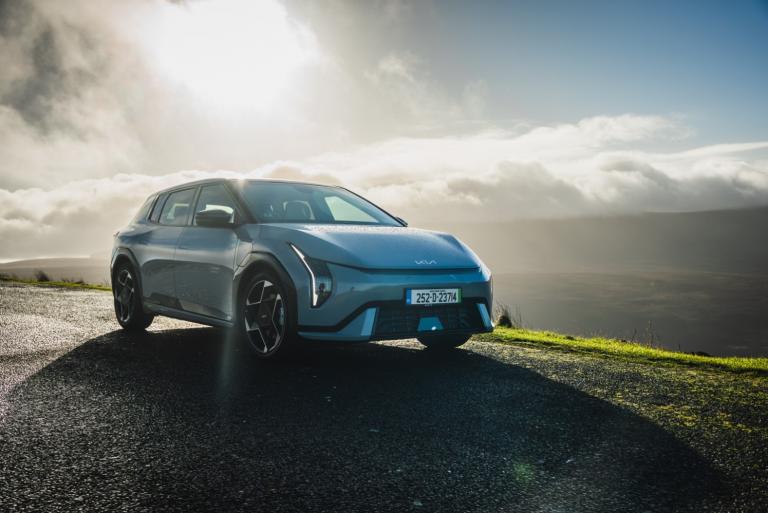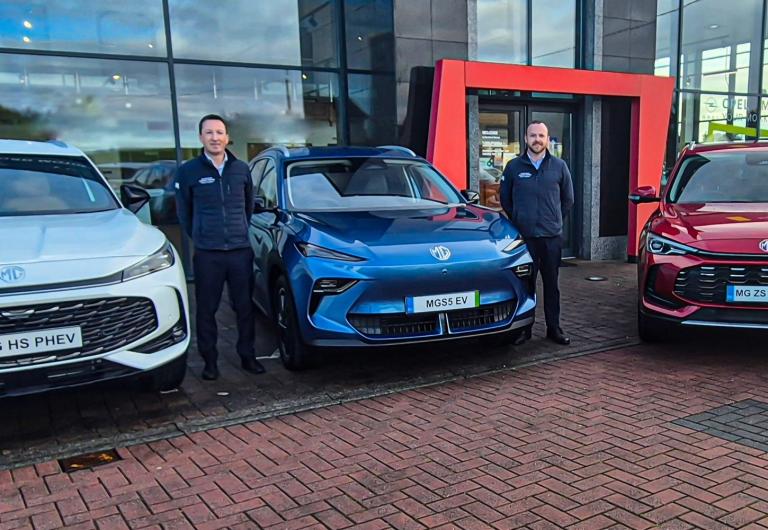Hyundai Ioniq Review
Published on 29 March, 2017
Hyundai enter the fashionable world of the eco-friendly motor vehicle with the Ioniq. Available in full electric, hybrid and plug-in hybrid.
Overview
Hyundai Ioniq Review
Having conquered the new car market with the Tucson last year, Hyundai have added another exciting new model to their expanding range in the shape of the all new Ioniq.
Hedging their bets on where the future of motoring is going to land, the Ioniq will be available in three different powertrains – none of which are diesel. Instead you’ll have a choice of Hybrid, Plug-in Hybrid, and this fully electric model.
Sit inside and well it’s very average – but in a good way. There’s nothing shouty or futuristic about the cabin, and I think it works. In fact bar a few subtle badges around the place and a keypad-style gearshift module, which is really cool by the way, you could very well be behind the wheel of an i30. A few bronze accents add a bit of glamour to the simple and sleek layout.
Bootspace suffers a little because of the battery at 350 litres, which is 20 litres less than the leaf, but still bigger than a Ford Focus. Space in the back is pretty typical for a family hatch – legroom is good and headroom is okay, although it is impacted ever so slightly by that sloping roof those closer to 6 foot might have their hair flattened.
On the plus side, standard equipment is extremely generous and includes such luxuries as heated seats, dual-zone air conditioning, and an 8 inch touchscreen complete with SatNav and reversing camera. Continuing on the futuristic theme - It’s fully compatible with Apple CarPlay and Android Auto, and comes with a built-in wireless phone charging pad.
There’s also some high-end safety features in the form of lane departure warning and adaptive cruise control, and it scored the full five stars on the NCAP safety test.
As for the drive itself it’s quiet, pleasant, refined - like any other normal automatic hatchback really. The sudden, silent power is surprising and fun, and the ability to switch between driving modes (normal, eco and sport) allows you to change the feel of the car for different driving situations. And while Sport mode doesn’t exactly turn it into a sports car, you do get a little rush of power as more energy is made available and it feels a little more willing as a result. Equally if you want to do the opposite and conserve more power – there are paddles on the steering wheel with which you can select the level of energy you claim back through braking. It might sound complicated, but it doesn’t have to be. For most people, all they will need to do is stick it in normal and keep it sufficiently charged to prevent the dreaded range anxiety.
In terms of running costs the Ioniq should prove rather frugal. The regular hybrid qualifies for an annual motor tax bill of just €170 and the full electric achieves the cheapest possible rate of €120 per annum thanks to zero exhaust emissions. The hybrid Ioniq promises fuel economy of just 3.4 litres per 100 kilometers. The full electric model should suit those with a short daily commute, simply charge up at home or in work for very little money and avoid weekly trips to the fuel pump.
Despite some effort by manufacturers and policy makers alike, there is still lack of confidence in electric and hybrid powered vehicles in Ireland. As a result you may find it trickier to sell an Ioniq over its more traditional rivals like the Golf or Focus.
But for those still weary of fully electric power Hyundai are offering an 8 year or 200,000km battery warranty on the battery in the electric Ioniq. Also as there are a lot less moving parts in a fully electric vehicle servicing should prove relatively cheap in comparison to an old fashioned petrol or diesel powered car.
Facts & Figures
Car Tested:
Ioniq ElectricCar Tested Price:
€28,495Starting Price
€28,495Fuel Economy
280km Range0 -100 Kms
10.2sPower
120PSEmissions
0 g/kmTax
€180Seats
5Isofix
2 pointsBootspace
350lNCAP safety rating
5/5Latest Reviews

Kia EV4 Video Review

CarsIreland Dealership Awards 2025: Celebrating Excellence Across Ireland

Rochford Motors Joins MG Network as New West of Ireland Dealer
